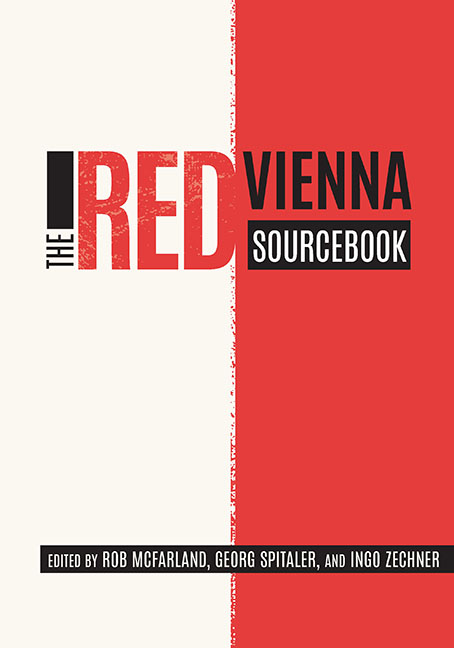Book contents
- Frontmatter
- Contents
- Acknowledgments
- Permissions and Credits
- A Note on the Structure of This Book
- Introduction
- Part I Foundations
- Part II Philosophies
- Part III Identities
- Part IV New Values
- Part V Social Engineering
- Part VI Vitality
- Part VII Housing
- Part VIII Cultural Politics
- Part IX Mass Media
- Part X Exchange
- Part XI Reaction
- Part XII Power
- Chronology
- References
- Contributors
- Index of Subjects
- Index of Persons
Introduction
Published online by Cambridge University Press: 23 October 2020
- Frontmatter
- Contents
- Acknowledgments
- Permissions and Credits
- A Note on the Structure of This Book
- Introduction
- Part I Foundations
- Part II Philosophies
- Part III Identities
- Part IV New Values
- Part V Social Engineering
- Part VI Vitality
- Part VII Housing
- Part VIII Cultural Politics
- Part IX Mass Media
- Part X Exchange
- Part XI Reaction
- Part XII Power
- Chronology
- References
- Contributors
- Index of Subjects
- Index of Persons
Summary
ON THE FRONT PAGE of the April 20, 1927, morning edition of the Social Democratic Arbeiter-Zeitung (Worker's newspaper), underneath a reminder to vote in the upcoming election, was a proclamation titled “A Rallying Cry of Vienna's Intellectuals: A Testimony to the Great Social and Cultural Achievements of the Municipality of Vienna.” Even though the authors agree that intellectually engaged people cannot bow to a particular political dogma, the declaration states: “It would be true neglect if, in the battle against tax burdens, we were to overlook the great social and cultural achievements of Vienna's leaders. It is this great and prolific achievement that cares for the needy, educates and develops young people on the basis of the best possible principles. […] [W] e want to be assured that this achievement transcending political considerations will be maintained and promoted.” The declaration is followed by a long alphabetical list of supporters, including great Viennese names from the fields of psychology (Sigmund Freud, Karl Bühler, Alfred Adler), law (Hans Kelsen), literature (Robert Musil, Franz Werfel, Alfred Polgar), music (Alma Mahler, Anton Webern), art (Franz Čižek, Anton Hanak), and architecture (Ernst Lichtblau, Oskar Strnad), as well as economists, theater directors, professors, leaders of the women's movement, and other luminaries in the Viennese intellectual and artistic firmament.
When this declaration of Vienna's intellectuals appeared in 1927 congratulating the Vienna city administration (Stadtverwaltung) and calling for people of many different political persuasions to overlook their differences and to support such “great achievements,” the city's Social Democratic leadership was nearly a decade into a one-of-a-kind experiment in democratic socialism. While other German-speaking cities and states managed to elect social democratic leaders for short periods during the 1920s and 1930s, the Social Democratic Workers’ Party (SDAP) held constant control of the city that came to be known—derisively at first, and then with pride—as “Red Vienna.”
After Germany's and Austria's defeat at the end of World War I, the Entente's Allied powers oversaw the creation of a democratic German nation. Many Austrians of all political stripes hoped that the German-speaking “rump state” left over from the dismembered Habsburg empire would be allowed to join the new German Republic as a southeastern state, “German Austria” (Deutsch-Österreich). The Allies forbade the so-called Anschluss, however, fearing the power of such a unified pan-German state. Instead, they only accepted a tiny country made up of small cities, rural districts, and the huge, polyglot imperial capital Vienna, now severed from its Hungarian, Czech, Galician, and Italian provinces. The Republic of German Austria even had to drop the German in its name.
- Type
- Chapter
- Information
- The Red Vienna Sourcebook , pp. 1 - 12Publisher: Boydell & BrewerPrint publication year: 2019

